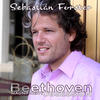In France, 1740, the aristocratic violist da gamba, abbot and lawyer, Hubert Le
Blanc wrote a strange book, published in Amsterdam by Pierre Mortier entitled
"Défense de la basse de viole contre les enterprises du violon et les prétentions
du violoncello" (Defense of the bass viol contrary to the enterprises of violin
and the pretensions of the violoncello.)
Who could be interested in a sarcastic and eccentric book with cultivated
arguments applauding the wonders of the family of viols, yet disparaging the
ever-increasing popular violin and cello?
What lay behind this harmless conflict?
The viols were an emblem of the aristocracy. Instruments attributed with an ease
of playing a refined melancholic language which was suitable for events in the
halls of castles and reserved for guests of prestige.
The performers of viols did not need to impress the audience with flashy or very
difficult artistry. Performances comprised of lyrical, polyphonic passages with
few sixteenth notes and no necessity to go into the treble. It was acceptable to
use the smaller viola and always remain in the harmonious sounds of the first
position. This display of skill was considered the virtue of a plebeian.
But enter the Italians, les buffons, with their wagon theaters and their comic
operas, larmoyant. All you could access. It was enough to pay admission. The
artists, in order to survive, had to impress with their skill. They bring their
violins and cellos with powerful sounds and skills of unmatched speed, doubles
and exaggerated extensions.
French musicians leave their violas and to learn from Neapolitans, Romans or
Venetians.
This is a great insult and come one, two, three querelle des buffons.
The Enlighteners don't wait.
Yet, an anti-aristocratic Diderot (1713-1784), more concerned with music,
defended vigorously the Italian style.
Since Bastille Day in 1789, marking the beginning of the revolution and the
extermination of the nobility, there was an immediate decline of viol and a
triumphant advance of the new instruments of the bourgeois society.
This album is the story of this change.
Music by: Joseph Bodin de Boismortier, Michel Corrette, Jean Baptiste Sèbastien
Brèval, Jean Barrière, Martin Berteau.
It was made for the celebration of the 300th anniversary of the birth of
Diderot and in collaboration with the Alliance Francaise.





